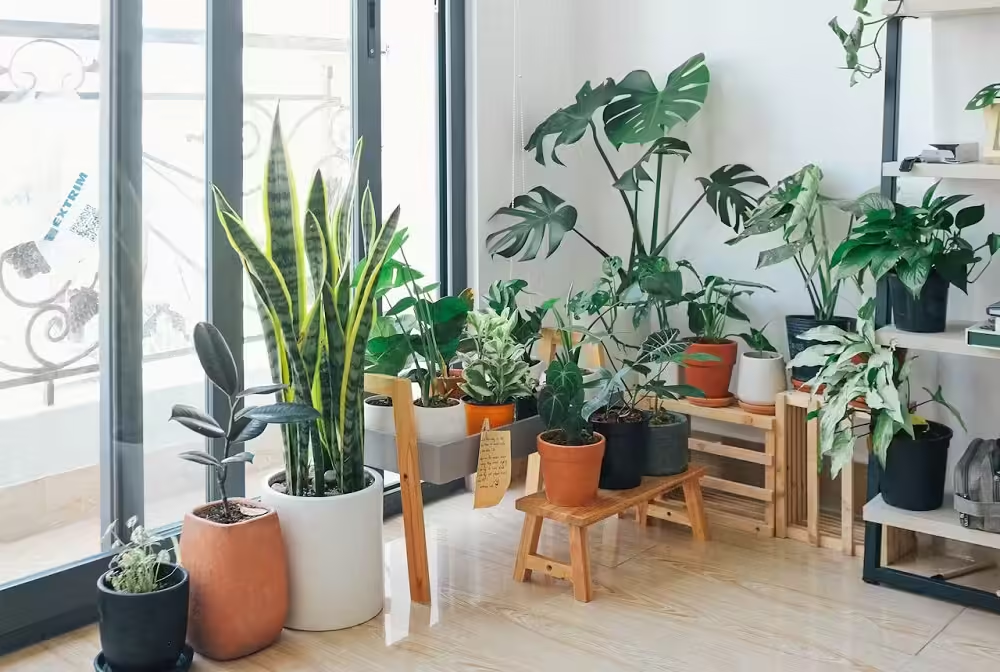If you’re looking to add a vibrant and exotic touch to your living space, tropical plants for home are the perfect solution.
Native to warm, humid environments, these plants offer an array of dramatic foliage, striking patterns, and lush greenery that can easily transform your home into a mini jungle. Whether you live in a sunny apartment or a cozy house, incorporating indoor tropical house plants can bring a fresh and soothing ambiance, as well as air-purifying benefits.
In this article, we’ll dive into everything you need to know about tropical plants for home—how to care for them, popular choices for both indoor and garden settings, and why they’re so special.
Tropical Plants for Home: A Closer Look
Tropical indoor house plants bring a slice of lush, green paradise into your living space. These exotic beauties, native to tropical regions like Africa, Madagascar, and Southern Asia, are celebrated for their vibrant foliage, unique forms, and air-purifying qualities. Their dramatic leaves and lush appearance make them a standout feature in any home, adding a jungle-like vibe to even the smallest apartment.
In their natural habitats, tropical plants thrive in warm, humid environments under the shade of larger trees, where they enjoy diffused sunlight, consistent humidity, and steady temperatures. Because of this, replicating their environment indoors is key to keeping these plants healthy. Without adequate moisture or light, tropical plants struggle to thrive. But don’t worry—with the right care, you can easily recreate their natural habitat at home.
One of the easiest ways to maintain humidity indoors is by using a humidifier or placing plant pots on trays filled with clay pebbles and water. This will help create a mini tropical environment for your plants, keeping them hydrated and happy, especially during the dry winter months.
How to Take Care of Tropical Plants Indoors
Caring for tropical plants indoors can be incredibly rewarding, especially when you watch them grow into vibrant, flourishing houseplants. Here’s a complete guide to keeping your tropical plants in top shape:
Light:
Most tropical plants prefer bright, indirect light. Too much direct sunlight can scorch their delicate leaves, so it’s best to place them near a window that receives filtered light. For plants that are in low-light conditions, consider rotating them occasionally to prevent them from leaning toward the light source.
Watering:
Tropical plants love moisture, but they don’t want to sit in soggy soil. Water your plants thoroughly, allowing the top inch of soil to dry out between waterings. Be sure to use pots with drainage holes to avoid root rot. During the dormant winter months, you can reduce watering slightly, but always check the soil before deciding.
Humidity:
The secret to happy tropical plants is humidity. Ideally, they should be in a room with 60-80% humidity. If your home is on the drier side, mist your plants regularly, or place them near a humidifier. For smaller plants, terrariums or grouping plants together can help maintain higher humidity levels.
Temperature:
Keep tropical plants in temperatures between 65°F and 85°F (18°C to 29°C). Be mindful of sudden temperature changes or cold drafts from windows or air conditioning units, as tropical plants are sensitive to cold.
Soil:
Use a well-draining, organic potting mix. Adding materials like perlite, orchid bark, or sand can improve drainage, which is crucial for preventing waterlogged roots.
Fertilization:
Feed your plants with a balanced, water-soluble fertilizer every 4-6 weeks during the growing season (spring and summer). In the fall and winter, when plant growth slows, reduce or stop fertilizing.
Pest Control:
Keep an eye out for common pests like spider mites, mealybugs, and aphids. Inspect the leaves regularly, especially the undersides. If you find any pests, treat them with insecticidal soap, neem oil, or wipe them off with a damp cloth. For recurring infestations, consider quarantining the affected plant.
Repotting & Pruning:
Most tropical plants enjoy being slightly root-bound but will eventually need to be repotted every 1-2 years as they grow. Prune away dead or yellowing leaves to encourage new growth and keep the plant looking its best.
List of Popular Tropical Indoor Plants
Here’s a curated list of some of the most popular tropical indoor house plants to add to your collection:
Alocasia
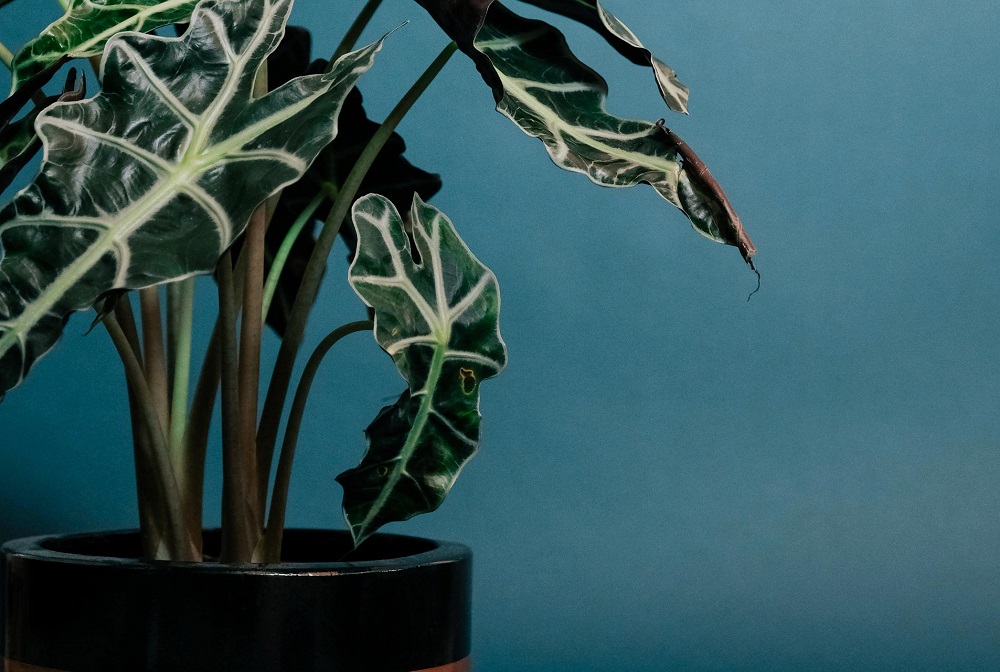
- Origin: Southeast Asia
- Names: Elephant Ear Plant
- Form & Shape: Known for its large, dramatic, heart-shaped leaves with bold veins.
- Needs: Thrives in bright, indirect light, requires high humidity and consistently moist soil.
Chinese Evergreen
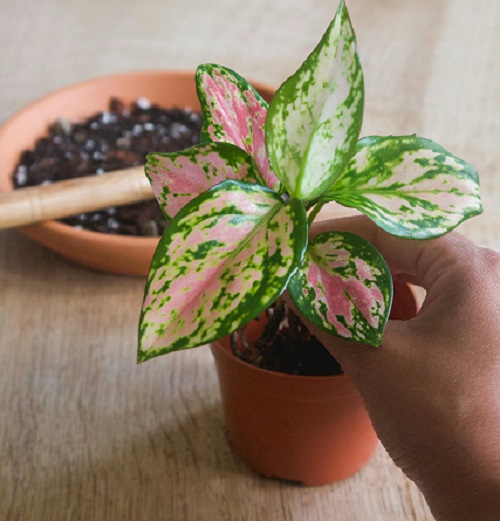
- Origin: Southeast Asia
- Names: Aglaonema
- Form & Shape: Broad, lance-shaped leaves with stunning silver-green patterns.
- Needs: Tolerates low light and low humidity but prefers moderate light. Water when the top inch of soil dries out.
Monstera
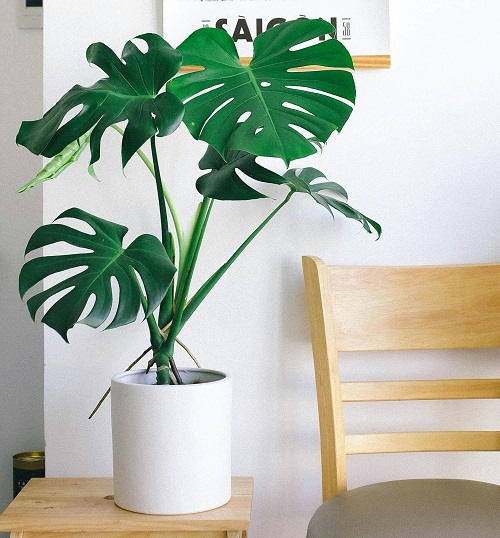
- Origin: Tropical Americas
- Names: Swiss Cheese Plant
- Form & Shape: Famous for its large, fenestrated leaves with iconic splits.
- Needs: Loves indirect light and prefers high humidity. Let the soil dry between waterings.
Spider Plant
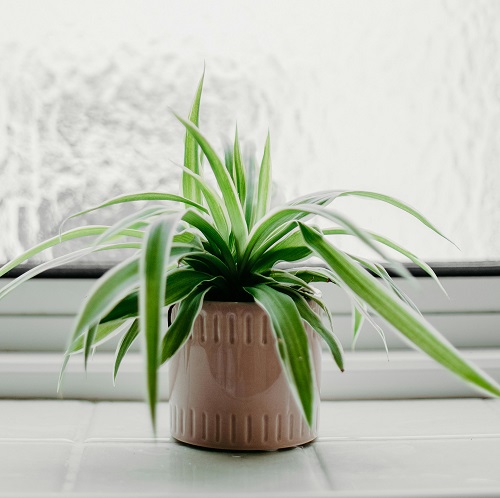
- Origin: South Africa
- Names: Chlorophytum comosum
- Form & Shape: Arching, grass-like leaves with white stripes.
- Needs: Tolerates low light but does best in bright, indirect light. Keep the soil moderately moist.
Pilea
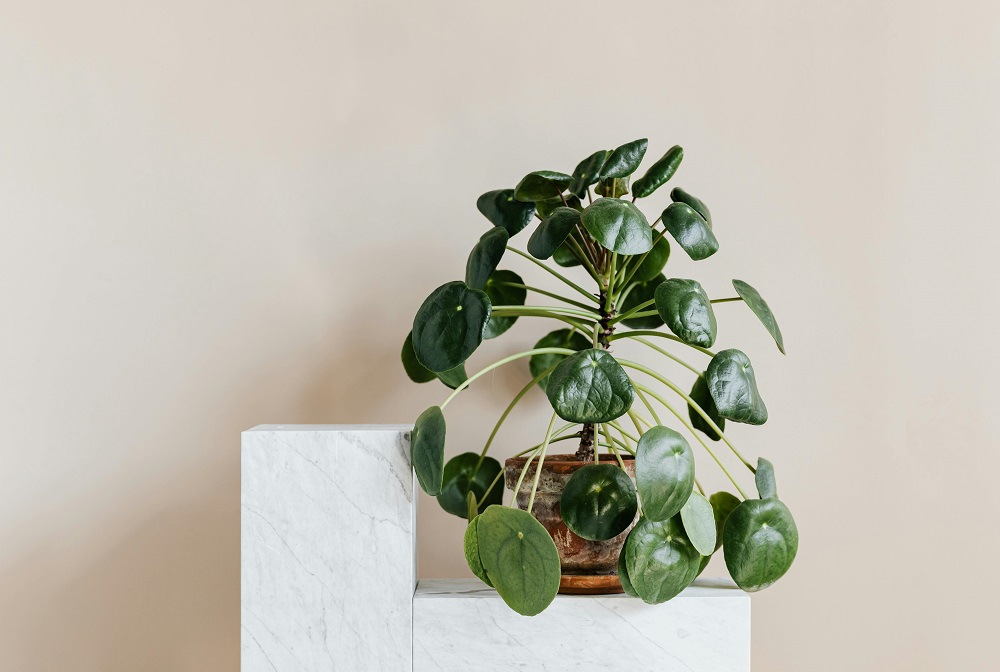
- Origin: Southern China
- Names: Chinese Money Plant
- Form & Shape: Small, coin-shaped leaves on thin stems.
- Needs: Prefers bright, indirect light and regular watering. Allow the top layer of soil to dry between waterings.
Philodendron Cordatum (Heartleaf)
- Origin: Central and South America
- Names: Heartleaf Philodendron
- Form & Shape: Heart-shaped leaves with trailing stems.
- Needs: Low to moderate light, with evenly moist soil. Regular pruning helps maintain its shape.
Maranta ‘Red Prayer’
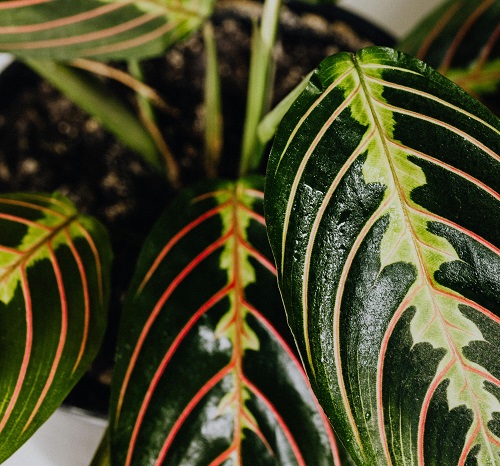
- Origin: Brazil
- Names: Prayer Plant
- Form & Shape: Oval, patterned leaves that fold up at night.
- Needs: Prefers bright, indirect light and high humidity. Water regularly, keeping the soil consistently moist.
Peperomia
- Origin: Central and South America
- Names: Radiator Plant
- Form & Shape: Small, thick, and fleshy leaves with unique patterns.
- Needs: Does well in bright, indirect light and prefers slightly dry soil between waterings.
Calathea
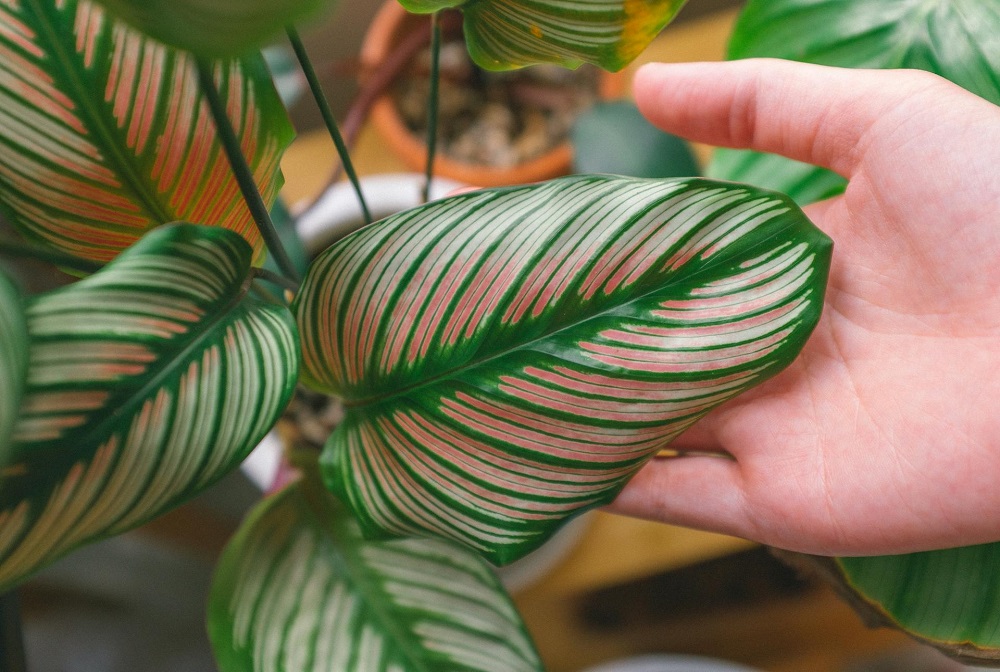
- Origin: Tropical Americas
- Names: Zebra Plant
- Form & Shape: Strikingly patterned leaves that move in response to light.
- Needs: Requires indirect light and moist soil. Loves humidity, so regular misting is essential.
Snake Plant
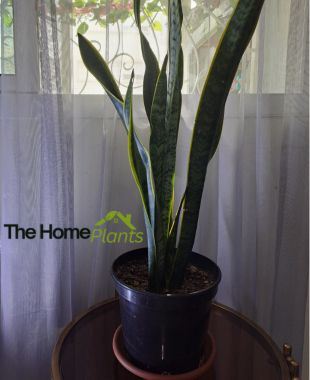
- Origin: West Africa
- Names: Sansevieria, Mother-in-Law’s Tongue
- Form & Shape: Tall, upright sword-shaped leaves.
- Needs: Can tolerate low light and prefers dry soil between waterings.
Ficus Elastica (Rubber Tree)
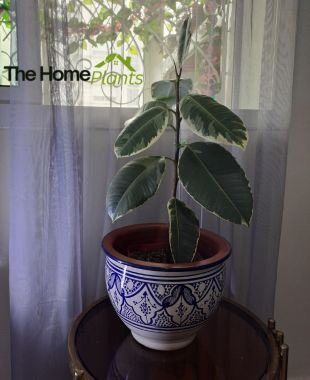
- Origin: Southeast Asia
- Names: Rubber Tree
- Form & Shape: Glossy, thick leaves in dark green or variegated forms.
- Needs: Loves bright, indirect light and regular watering with good drainage.
Peace Lily
- Origin: Central America
- Names: Spathiphyllum
- Form & Shape: Dark green leaves with delicate white spathe flowers.
- Needs: Does well in low to moderate light and prefers moist soil.
Dracaena
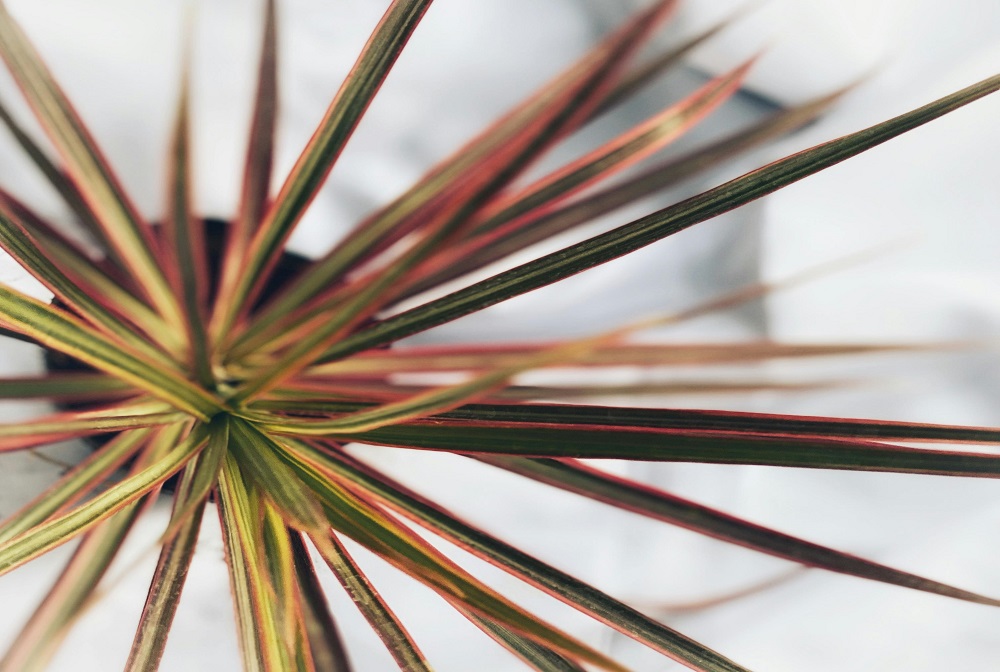
- Origin: Madagascar
- Names: Dragon Tree
- Form & Shape: Long, slender leaves with a tree-like growth habit.
- Needs: Thrives in bright, indirect light and requires well-drained soil.
Final Thoughts
From their vibrant aesthetic appeal to their purifying properties, tropical plants for home are not only a visual treat but also beneficial for your living space. Whether you’re styling your home or garden, these plants bring a slice of nature indoors, enhancing the beauty and comfort of your surroundings. With proper care—light, humidity, and the right soil mix—your indoor tropical house plants can thrive, creating a lush, green retreat that soothes the senses.
Ready to bring the tropics into your home? Explore the variety of tropical plants for home and garden, and create your very own indoor paradise with these stunning tropical indoor house plants!

